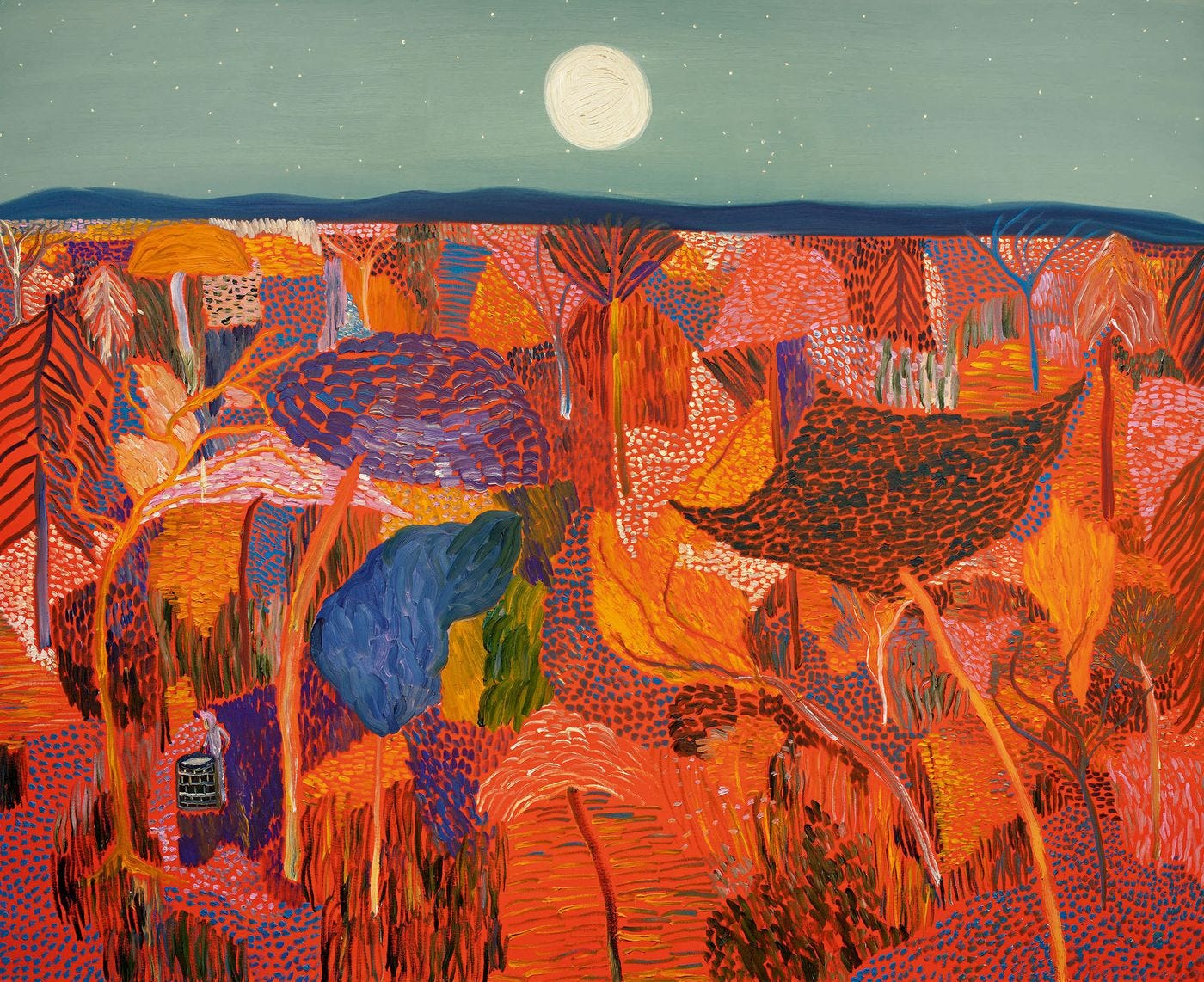July has been a big month for the virtual art world (and with auction houses in particular), as normal operations have been almost completely transitioned online. Like the restaurant industry (see articles by David Chang + Gabrielle Hamilton), the art world is a fragile, sensitive ecosystem that was far from ready from such a dramatic shift in human interaction. Since our full lockdown in April and one cancelled art event after the other (Art Basel in Switzerland which pushed its summer fair to the fall has announced it will now be cancelled all together), there have been significant advancements in the new world online and consumer behavior. I’ve written a roundup of the trends and changes that have taken place, which aims to showcases that the learning curve, while steep, has had some encouraging outcomes.

Above: Helen Frankenthaler’s “Royal Fireworks,” 1975
🖥️ The Big Transition
Marquee auctions moving online
Sotheby’s, Christie’s, and Phillips all held their own versions of the glitzy marquee modern and contemporary auctions this month, almost exclusively online.
The highest online bid in history was made on Jean-Michel Basquiat’s “Untitled (Head)” 1982, which surpassed its high estimate to sell to an online bidder for a hammer price of $13.1M.
Overall, the property offered was carefully sourced, focusing on fewer lots and artists with dedicated followings — which successfully inspired bidding frenzies and record-breaking results.
Matthew Wong’s work “The Realm of Appearances,” 2018 (below), for example, had 59 registered bidders, from 16 countries at Sotheby’s. His works were sold on the primary market for $22,000 two years ago but hammered this month at $1.5M(!!). This was a result of the fact that the young artist passed away in October, so collectors are forced to compete for the remaining, limited supply of his works.

A bit of turbulence…
However, despite interest online, auction sales fell to $2.9 billion through July 10, 2020, down from $5.7 billion during the same period, or nearly half, new data revealed.
The market for Rudolf Stingel, a previously coveted art star, has taken a bit of a hit as his prices have quickly outstripped people’s ability to buy his work. Repercussions included in a few guarantees being revoked in preparation for the pandemic sales.
FYI: A guarantee is an agreement by which the seller agrees to consign their work to an auction house, and the auction house agrees to guarantee to the seller that, whatever the outcome of the auction, the seller will receive a minimum sale price.
🔥Trending Online
Young artists with carefully controlled markets
Phillips “New Now” Sale in London young newcomers including Eddie Martinez, Amoako Boafo (below), and Genieve Figgis occupied the top lots of the sale - demonstrating a significant shift from the previously coveted blue-chip names (Damien Hirst and Urs Fischer).
If Amoako Boafo’s name sounds familiar, that’s because almost 20 recently-made works have appeared on the re-sale market this season. He also recently collaborated on a new line for Dior.
The success, however, is well deserved — read about the ways Boafo celebrates the Black diaspora and elevates the black community in Vienna and globally, here.

Previously overlooked female artists gaining traction
The impressive collection of Ginny Williams came to auction this month. The collector/dealer was a big supporter of female artists from early on, a bet that paid off as many of her 18 works presented broke auction records.
Highlights include Lee Krasner’s “Re-Echo,” 1957, which sold for $9 million and a Helen Frankenthaler’s “Royal Fireworks,”1975 (at top), which sold for a new record $7.9 million.
The end of the small gallery?
Jerry Saltz has penned a beautiful (yet somewhat heartbreaking) piece contemplating the future of the small to mid-size gallery as a result of the merging of Gavin Brown’s unique bad-boy art space with the veteran dealer, Barbara Gladstone. The thought-provoking article asks a lot of questions about the sustainability of the mom-and-pop-shop in the art world (where some of the most magical shows take place and artists are discovered), that only time will answer.
This also reminds me of Magda Sawon’s article for artnet which takes an optimistic approach, insisting that change will take place, but hopefully, this change brings us back to the roots of what art is all about — less jetting around the world for art fairs, more creativity and alternative shows.
Supporting good causes
Charity auctions have continued to see a major increase in interest for supporting important causes, from COVID relief to Black Lives Matter, art has been able to raise significant funds for important causes.
Many galleries are still continuing to donate a portion of proceeds to causes (including Rental Gallery’s show noted below).
👀 Gallery Shows to check out right now
If you are looking for affordable art and want to support a small local business (Toronto friends!) Ninth Editions has some great works. See Nathan Carson’s
”3 ángeles,” 2018 (below).P.S. if you find a work you like, I am happy to help you get a discount.

Questions about this newsletter or otherwise? You know where to reach me…Until next time! xx


